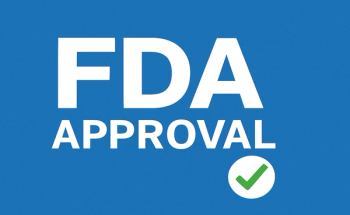
Study Summary: Migraine Prophylaxis and Risk of Cardiovascular Events, Cerebrovascular Events, and Mortality
Background
The results of previous studies show a link between migraine and cardiovascular (CV) and cerebrovascular (CBV) disease, and mortality as a potential outcome due to these diseases or other causes. How CV and CBV events and mortality may be influenced by drugs used in migraine prophylaxis has not been extensively studied. Anticonvulsants, antihypertensives, antidepressants, and botulinum toxins have all been used for migraine prophylaxis despite having primary indications for other diseases.1
Two novel monoclonal antibodies that function as antagonists at calcitonin gene-related peptide (CGRP) receptors were approved by the FDA for migraine prophylaxis treatment in 2018.1-3 As more treatment options for migraine prevention are developed, it is important to evaluate the potential association between the use of migraine prophylaxis agents and the risk of CV or CBV events or mortality.1 The study summarized here describes an analysis of risk based on exposure to non-CGRP agents that have been used in migraine prophylaxis.1
Methods
The study by Hoffman et al was a retrospective observational cohort analysis of data from an administrative claims database for commercially insured patients and patients with Medicare Advantage plans through United HealthCare.1
Administrative claims data from January 2010 through September 2015 were collected from patients aged 18 to 65 years and who had an International Classification of Diseases, 9th Revision, Clinical Modification (ICD-9-CM) diagnosis code for migraine; a claim for migraine treatment in the inpatient, outpatient, or emergency department setting; and/or a visit to a neurologist. Patients who had any medical claim associated with an ICD-9-CM epilepsy code were excluded to rule out the possibility that an anticonvulsant was being used to treat seizure activity rather than to prevent migraine.1
The exposure variable was the initiation of any of the following agents for migraine prophylaxis: anticonvulsants (topiramate, valproic acid or derivatives, pregabalin, gabapentin, levetiracetam, zonisamide, or carbamazepine), antihypertensives (beta-blockers, calcium channel blockers [CCBs], lisinopril, or candesartan), antidepressants (tricyclic antidepressants [TCAs] or serotonin norepinephrine reuptake inhibitors [SNRIs]), and miscellaneous agents (botulinum toxins, cyproheptadine, methysergide, memantine, carisoprodol, clonidine, or guanfacine).1
Outcomes evaluated included CV events (myocardial infarction [MI], myocardial ischemia, unstable angina), CBV events (stroke, hemorrhagic stroke, or transient ischemic attack [TIA]), and mortality. CV and CBV events were identified via ICD‑9-CM diagnosis codes, as well as ICD-9-CM procedure codes for coronary revascularization. Mortality was identified by linking patient information in the administrative claims database to data from the National Death Index maintained by the National Center for Health Statistics.1
Propensity score matching was utilized to match patients treated with topiramate to patients treated with (1) antihypertensives, (2) nontopiramate anticonvulsants, (3) antidepressants, and (4) all other prophylactic agents not falling into the other 3 categories. Patients with claims for topiramate were matched to patients with claims for the other agents because topiramate appeared most commonly in the cohort. Matching was performed 1:1 and without replacement; a patient could not be used as a match to a topiramate patient more than once. After patients were matched based on propensity scores, Cox proportional hazards regression models were used to estimate the risk of an event for the topiramate group compared with the other treatment groups.1
A nested case-control analysis was also performed. To evaluate the risk of each outcome to determine the odds of an event occurring when exposure to a specified prophylactic agent was compared with nonexposure in the 12 months prior to the case or control-defined event date, separate multivariable logistic regression models were computed. Cases were taken to be the incident outcome of interest, and controls were selected in a ratio of 100 cases per 1 control to provide sufficient statistical power.1
Results
Propensity Score Matching Analysis
The migraine cohort consisted of 119,243 patients. Patients taking topiramate for migraine prophylaxis had a lower overall risk of mortality compared with all matched treatment groups (
Case-Control Analysis
In the nested case-control analysis, results of the multivariable logistic regression models indicated the following results, which are summarized in
Anticonvulsants: The use of topiramate was not significantly associated with increased risk for any of the outcomes examined in the study. However, use of nontopiramate anticonvulsants compared with their nonuse in the 12 months prior to an event or control date was associated with more than 5 times higher odds of overall mortality and CV- or CBV-related mortality (odds ratio [OR], 5.83 and 5.47, respectively; 95% CI, 4.49-7.58 and 2.53-11.83). They were also associated with 78% higher odds of MI (OR, 1.78; 95% CI, 1.23-2.56), 77% higher odds of unstable angina (OR, 1.77; 95% CI, 1.02-3.09), more than twice the odds of ischemic stroke (OR, 2.38; 95% CI, 1.85-3.07), and 68% higher odds of hemorrhagic stroke (OR, 1.68; 95% CI, 1.03-2.75).1
Antihypertensives: Use of a beta-blocker for migraine prophylaxis was associated with twice the odds of overall mortality (OR, 2.00; 95% CI, 1.49-2.68), as well as 54% higher odds of ischemic stroke (OR, 1.54; 95% CI, 1.18-2.01). However, use of a CCB was not significantly associated with increased odds for any of the study events. Use of an antihypertensive that was not a beta-blocker or CCB (ie, lisinopril or candesartan) was significantly associated with more than twice the odds of MI (OR, 2.09; 95% CI, 1.32-3.30), myocardial ischemia (OR, 2.90; 95% CI, 1.08-7.79), unstable angina (OR, 2.10; 95% CI, 1.09-4.07), ischemic stroke (OR, 2.22; 95% CI, 1.55-3.18), and TIA (OR, 2.25; 95% CI, 1.06-4.79).1
Antidepressants: TCAs were associated with significantly higher odds for hemorrhagic stroke (OR, 2.01; 95% CI, 1.23-3.28) and overall mortality (OR, 1.90; 95% CI, 1.37-2.65). SNRIs were associated with 85% higher odds of MI (OR, 1.85; 95% CI, 1.24-2.76) and 69% higher odds of ischemic stroke (OR, 1.69; 95% CI, 1.26-2.28), as well as significantly higher odds of CV- or CBV-related mortality and overall mortality (OR, 2.96 and 3.05, respectively; 95% CI, 1.23-7.10 and 2.27-4.11, respectively).1
Other agents: The use of a miscellaneous agent for migraine prophylaxis (botulinum toxins, cyproheptadine, methysergide, memantine, carisoprodol, clonidine, or guanfacine) was associated with significantly higher odds of MI (OR, 2.05; 95% CI, 1.29-3.25), unstable angina (OR, 2.20; 95% CI, 1.12-4.33), ischemic stroke (OR, 2.25; 95% CI, 1.62-3.12), hemorrhagic stroke (OR, 2.08; 95% CI, 1.16-3.75), and overall mortality (OR, 3.11; 95% CI, 2.20-4.39).1
Discussion
This observational study utilized data from an administrative claims database to assess CV, CBV, and mortality risk associated with selected drug therapies used for the prevention of migraine in a cohort of patients with migraine. Propensity score matching and multivariable logistic regression models were employed to investigate associated risks. Topiramate had a lower risk of overall mortality compared with other treatments, and the ORs for both topiramate and CCBs were not statistically significant in any of the outcome categories. All other agents used as migraine prophylaxis were associated with significant risk for events.1
The authors noted several limitations to this study. Prophylactic treatments (other than topiramate) may be associated with risk factors for the outcomes evaluated, and these risk factors may have been present before cohort entry or developed subsequent to cohort entry. Also, claims for migraine prophylaxis treatment may be a surrogate marker for increased migraine severity, leading to baseline risk above other patients with migraine. For example, increased use of rescue medications such as triptans and ergotamines have vasoconstrictive properties that may have independently contributed to increased risk for ischemic events. Furthermore, certain outcomes may have had nonsignificant results due to the small sample sizes for those events. Finally, there are inherent limitations in the use of administrative claims data. For example, this type of data does not capture whether a patient who had a claim for a medication actually took the medication as prescribed.1
References
- Hoffman V, Xue F, Ezzy SM, et al. Risk of cardiovascular and cerebrovascular events and mortality in patients with migraine receiving prophylactic treatments: an observational cohort study [published online June 13, 2019]. Cephalalgia. doi: 10.1177/0333102419856630.
- Aimovig [prescribing information]. Thousand Oaks, CA: Amgen Inc; 2019. pi.amgen.com/~/media/amgen/repositorysites/pi-amgen-com/aimovig/aimovig_pi_hcp_english.ashx. Accessed August 6, 2019.
- Ajovy [prescribing information]. North Wales, PA: Teva Pharmaceuticals; 2019. ajovyhcp.com/globalassets/ajovy/ajovy-pi.pdf. Accessed August 6, 2019.
Newsletter
Stay ahead of policy, cost, and value—subscribe to AJMC for expert insights at the intersection of clinical care and health economics.









































